A/B testing your online donation forms can provide valuable insight to boost conversion rates and better fund your mission. What's more, if your online donation forms are integrated with a constituent relationship management tool, like Salesforce, these A/B tests can offer far more than just conversion rates with which to judge performance. But what should you test and what questions do those tests allow you to answer?
Here are ten A/B testing areas and what you can glean from each:
{loadposition blog-ad-general}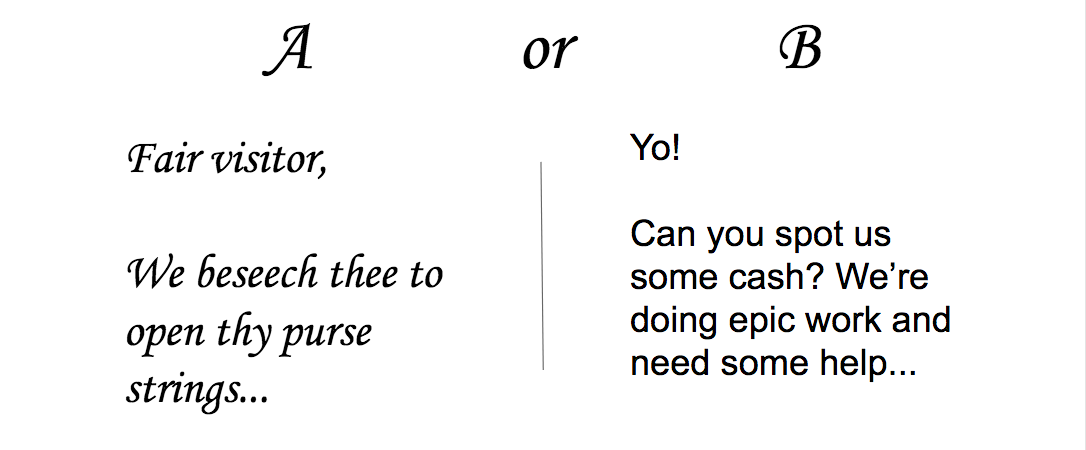
1. Alter the Appeal Text
Why It Matters:
A clear and persuasive appeal is critical to making the case for why a visitor should donate.
What Questions Are You Asking:
Appeal text can vary wildly in tone and content. Should you be more formal or more conversational? Should you address the visitor directly or speak in the third person? Should you emphasize quantitative outcomes or a personal story or a mix? What should the page title say? All of these questions can be addressed through A/B tests focused on your appeal text.
How You Measure Performance:
Conversion rate, average donation amount, number and percentage of recurring donations, number and percentage of one-time donations, number and percentage of new donors, number and percentage of existing donors, total projected donation amount

2. Swap out the Appeal Image
Why It Matters:
The imagery you choose can be a powerful tool for conveying your mission and brand.
What Questions Are You Asking:
Do group shots work best? Should there be action in the photos? Do close up shots of smiling people elicit the right response? Does an image evoking the need prove more persuasive?
How You Measure Performance:
Conversion rate, average donation amount, number and percentage of recurring donations, number and percentage of one-time donations, number and percentage of new donors, number and percentage of existing donors, total projected donation amount

3. Show a Photo vs. Show a Video
Why It Matters:
Imagery can engage or detract. It can draw in or divert attention.
What Questions Are You Asking:
Does a persuasive video or the simplicity of a single image increase the likelihood that an individual will donate?
How You Measure Performance:
Conversion rate, average donation amount, number and percentage of recurring donations, number and percentage of one-time donations, number and percentage of new donors, number and percentage of existing donors, total projected donation amount

4. Default to a Recurring Donation Option vs. Default to a One-Time Donation Option
Why It Matters:
While any donation is welcome, recurring donations are cherished by nonprofits. Altering the default selection on your donation form may influence visitor behavior.
What Questions Are You Asking:
Are visitors more likely to select the default frequency on the donation form? Does defaulting to a recurring option increase the percentage of recurring donations? Does it decrease the conversion rate?
How You Measure Performance:
Conversion rate, number and percentage of recurring donations, average recurring donation amount, number and percentage of one-time donations, average one-time donation amount, total project donation amount

5. Ask for Smaller Donation Amounts vs. Ask for Larger Donation Amounts
Why It Matters:
Asking for an amount too small can result in fewer dollars raised. Asking for an amount too big can turn off potential donors.
What Questions Are You Asking:
Does asking for a smaller amount increase the conversion rate, resulting in more donations? Does asking for a larger amount increase the average donation size?
How You Measure Performance:
Conversion rate, number of donations, average donation amount, total projected donation amount
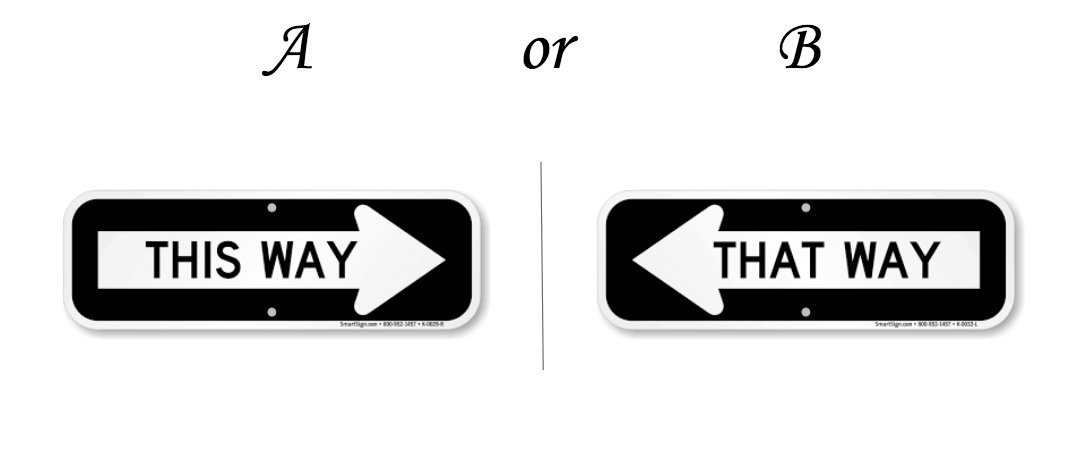
6. Choose One Amount as the Default vs. Choose Another Amount as the Default
Why It Matters:
Individuals can be drawn to the value that is pre-selected on the donation form.
What Questions Are You Asking:
Does a smaller default amount increase the conversion rate, resulting in more donations? Does a larger default amount increase the average donation size?
How You Measure Performance:
Conversion rate, number of donations, average donation amount, total projected donation amount
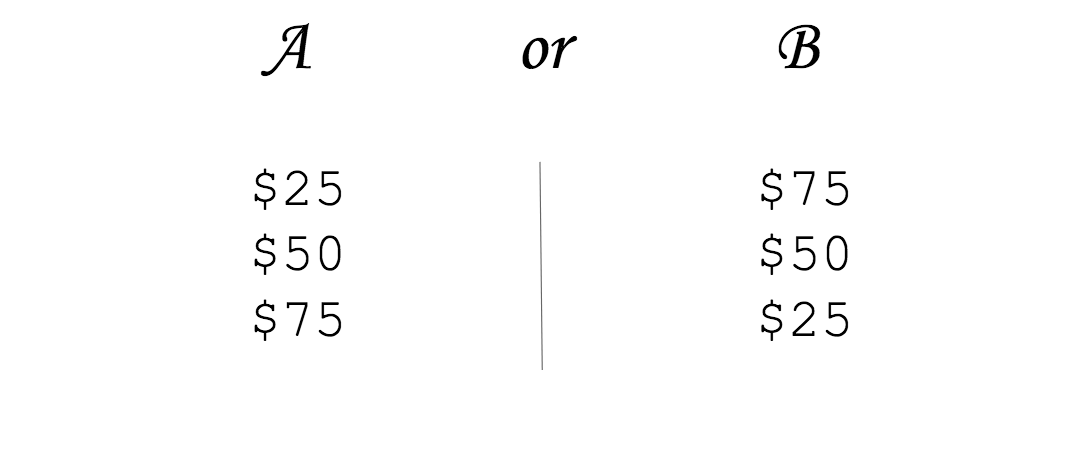
7. Change the Order of the Donation Amounts Options
Why It Matters:
Studies have shown that the value shown in the middle of three options has a greater likelihood of being selected.
What Questions Are You Asking:
Does changing the order of the suggested donation amounts increase the conversion rate or the average donation amount?
How You Measure Performance:
Conversion rate, number of donations, average donation amount, total projected donation amount
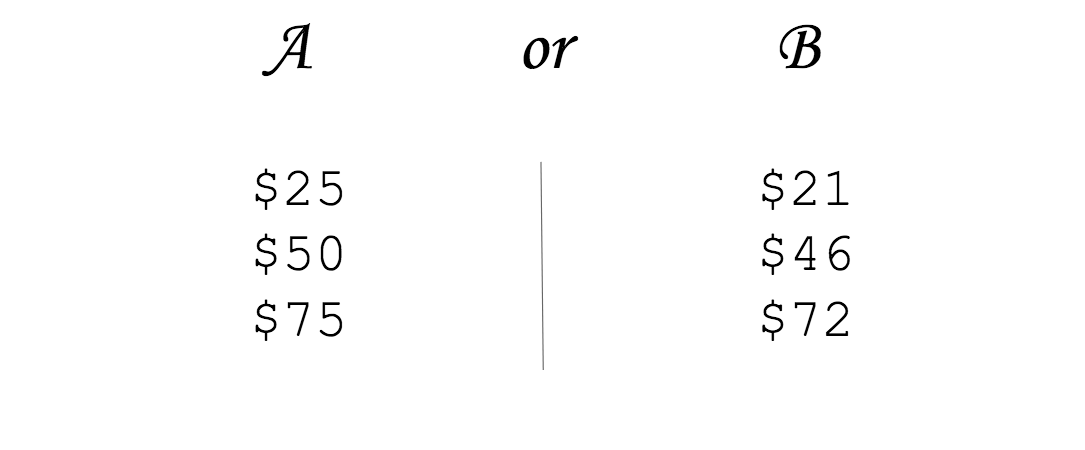
8. Use Standard Suggested Donation Amounts vs. Use Non-Standard Donation Amounts
Why It Matters:
Using non-standard donation amounts can cause individuals to stop and think more deliberately about the options. Studies have shown that, when an individual is required to think more fully about a decision, their desire to see themselves as a virtuous person comes more to the fore and can encourage them to choose to donate a larger amount.
What Questions Are You Asking:
Does using non-standard suggested donation amounts increase conversion rates? Does it increase the average donation amount?
How You Measure Performance:
Conversion rate, number of donations, average donation amount, total projected donation amount

9. Adjust the Order of the Donation Form Elements
Why It Matters:
The order in which elements are presented on the donor form is key to the user experience.
What Questions Are You Asking:
If the donation amount section of the form is first, does the conversion rate increase? If the contact information portion of the form is first, does that increase conversion rate because individuals can begin filling out the form without much deliberate thought?
How You Measure Performance:
Conversion rate, number and percentage of new donors, number and percentage of existing donors
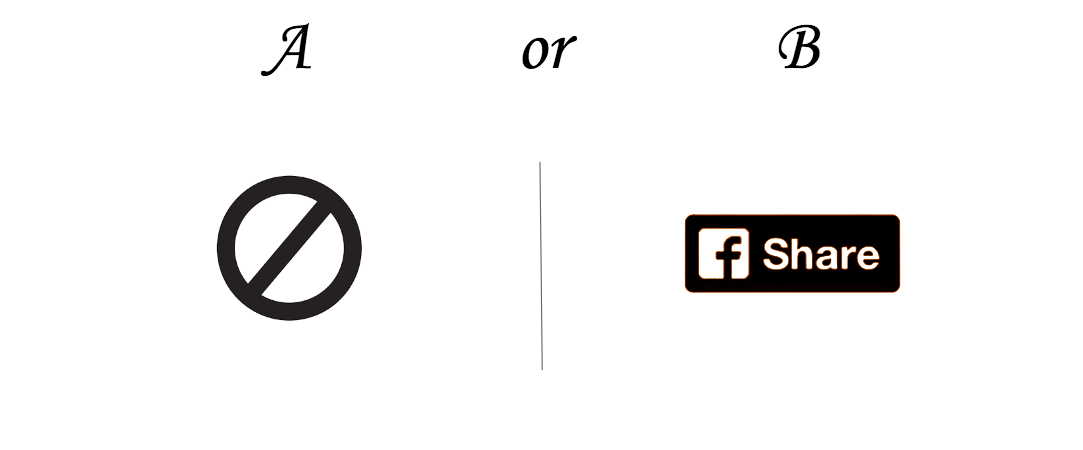
10. Do Not Offer Social Sharing Options on the Thank You Page vs. Offer Social Sharing Options on the Thank You Page
Why It Matters:
Engaging a donor's social networks to promote your organization can prove a helpful strategy for gaining new donors.
What Questions Are You Asking:
Does offering an easy way for donors to share the fact that they donated over social media channels result in a higher number of new donors giving through the form?
How You Measure Performance:
Number and percentage of new donors, average donation amount from new donors
Ready to dig deeper? For specifics on how to conduct an A/B test along with methods for reporting on the metrics noted above in Salesforce for your nonprofit, watch our free webinar, Six Ways to Get Smarter with Your 2018 Fundraising.